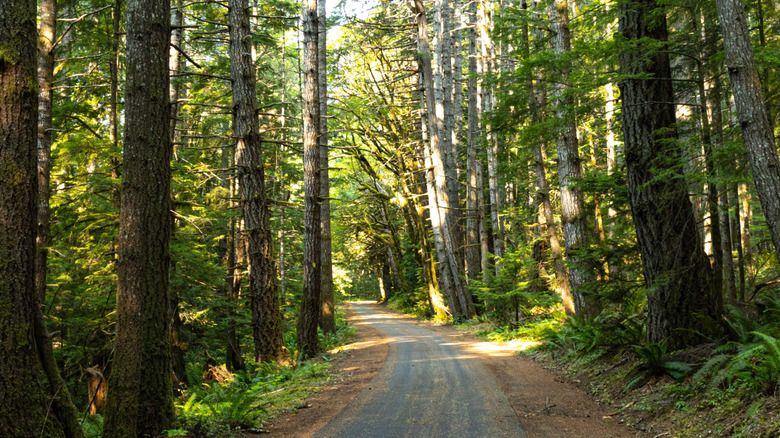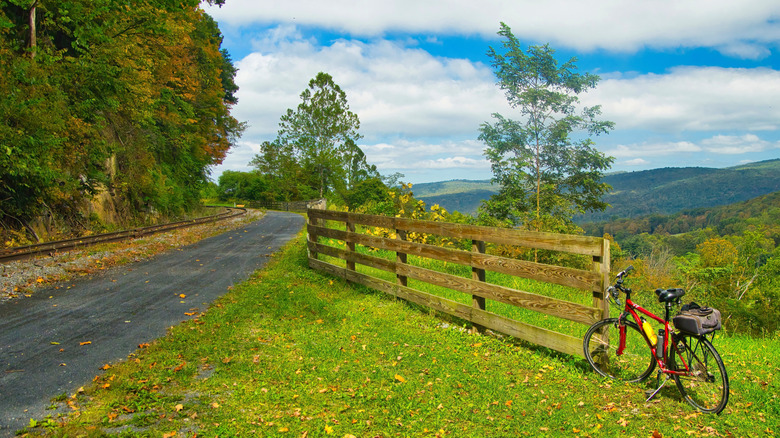The Great American Rail Trail Offers Cyclists And Walkers Over 2,000 Miles Of Scenic Car-Free Adventure
Tired of sitting in traffic, sucking up exhaust fumes, and dealing with road rage? If so, there's a national project you might want to hear about. It's called the Great American Rail-Trail, and its mission is to create the first multi-use, car-free pathway across the United States.
The proposed 3,700-mile route is the brainchild of the Rails to Trails Conservancy, and when completed, it will stretch all the way from the state of Washington to Washington, D.C. In fact, the last stretch of the route passes by the Lincoln Memorial in the U.S. capital, an appropriate nod to the president's role in establishing a transcontinental railroad in the 1860s.
The Great American Rail-Trail welcomes both pedestrians and cyclists and is made up of over 150 connected rail-trails and other existing greenways. "Railroads can only travel at a low elevation grade, which makes their old corridors ideal for the trail needs of a wide variety of people," explained Kevin Belle, project manager for Rails to Trails Conservancy. Belle explains that, with mostly flat, paved, or crushed-rock surfaces, the pathway is perfect for beginners and seasoned hikers and cyclists alike.
The best nature and city routes along the Great American Rail-Trail
Before heading out on the Great American Rail-Trail, you should review the official interactive map to determine what kind of experience you're looking for. Think about where you'd like to start from, how far you plan to go, and what types of environments you want to see. The lengthiest sections of the completed trail run through Washington, Nebraska, Iowa, Illinois, Indiana, Ohio, Pennsylvania, and Maryland. Each of these developed segments contains more than 200 miles of continuous trail, with a new city appearing approximately every 5 to 20 miles in case you want to stop, rest, or explore.
Adventure seekers will find a more challenging experience through some of the western sections, such as the 202-mile-long Cowboy Recreation and Nature Trail in Nebraska or the 245-mile-long Palouse to Cascades State Park Trail section in Washington state. Visitors embarking on multi-day treks through the Palouse to Cascades area can even stay overnight at the Iron Horse Inn in South Cle Elum, which features rustic suites built inside restored train cabooses.
However, if city life is what you're after, head for the Burke-Gilman Trail in Seattle. This former railroad track runs for almost 20 miles between two of the city's parks (Golden Gardens Park and Blyth Park) and along Lake Washington. The route winds through several metropolitan neighborhoods and is dotted with plenty of pubs, cafes, and coffee shops to sample along the way.
How to prepare for your Great American Rail-Trail trip
It's important to check the weather in whatever location you use to access the Great American Rail-Trail. And while you can't control Mother Nature, you can pick a time of the year with mild temperatures to avoid the risk of exercising in the extreme heat. However, if your calendar only allows for time off during the summer, there are ways to make sure you don't suffer heat stroke while outdoors.
Walkers or runners should invest in a good shoe before hitting the trail. Here are some of the best athletic shoes to consider for this type of trip. Cyclists also need to make sure they gear up with the right equipment, clothing, and accessories. Taking your bike to a local shop for a tune-up will also ensure you're ready to hit the trail. If you don't already have a bike for the journey, check out these recommended bikes for all types of exploring.
And don't forget about the most important piece of equipment: your body! It is generally recommended to begin physical training at least 12 weeks prior to a major hiking or cycling trip such as this one. This allows time to build up your strength and stamina while testing out those new shoes and equipment. At the time of this writing, the Great American Rail-Trail project is over 2,050 miles long — roughly 55% complete — and will likely take decades to fully finish. But until then, there are hundreds of miles of trails just waiting to be discovered.


